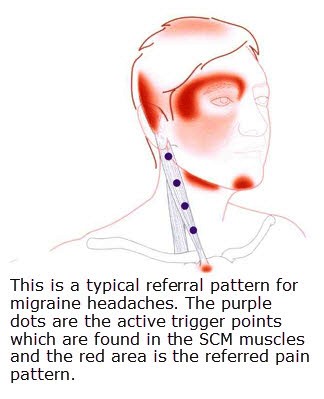Trigger
Point Therapy
Introduction
Video
Treatment
Approaches:
The most effective treatment approaches that we
offer in our office includes the following:
 Acupuncture Acupuncture
 Spray and Stretch Spray and Stretch
 Myofascial Release Myofascial Release
 Acuscope / Myopulse Acuscope / Myopulse
 Homeopathic Injectable Medications Homeopathic Injectable Medications
In several instances, Dr. Hardy will combine the above treatments to give you the quickest and best results
possible.
For additional information and pain referral patterns, please read the following information below:
Trigger Point
Classification: 
Trigger Points are described in various ways according to
location, tenderness and
chronicity.
The 6 different types of trigger points are descibed below:
Primary (or Central) Trigger
Points:
These are the most well-established when they
are active, and are usually what people refer to when they talk about trigger points.
The primary trigger points always exist in the center of the muscle belly.
Secondary (or Satellite) Trigger
Points:
Secondary trigger points may be created as a
response to the central trigger point in neighbouring muscles that lie within the referred pain zone.
Diffuse Trigger
Points:
Trigger points can sometimes occur where
multiple secondary trigger points exist secondary to multiple primary trigger points.
Latent (or Inactive) Trigger
Points:
This applies to lumps and nodules that feel
like trigger points.
These can develop anywhere in the body; and are often secondary.
However these trigger points are not painful, and do not elicit a referred pain pathway.
Active Trigger
Points:
This can apply to primary and secondary trigger
points.
This trigger point is both tender to palpation and elicits a referred pain pattern.
_____________________________________________________________________
Trigger Point Symptoms
and Referred Pain Patterns:
Pain is a complex symptom
experienced differently and individually.
However, referred pain is the defining symptom of a myofascial trigger point.
You may be used to the idea of referred pain of a visceral origin; an example of this is heart pain.
A heart attack is often not experienced as crushing chest pain, but as pain in the left arm and hand, and in the
left jaw.
Referred pain from a myofascial trigger point is somewhat different.
It is a distinct and discreet pattern or map of pain.
This map is consistent and stimulating an active trigger point generates either
part or all of the entire map of pain.
Patients describe referred pain in this map as having a deep, aching quality; movement may sometimes exacerbate
symptoms, making the pain sharper.
An example of this might me a headache. The patient often describes a pattern of pain, or ache, which can sometimes
be aggravated and made sharper by moving the head and neck.
| 
